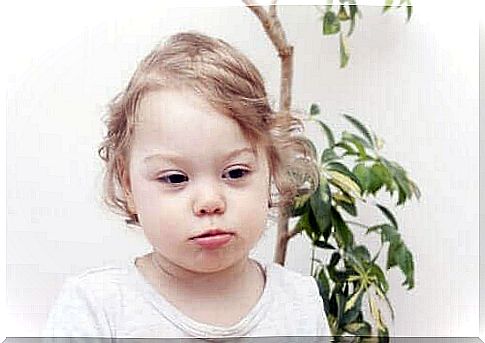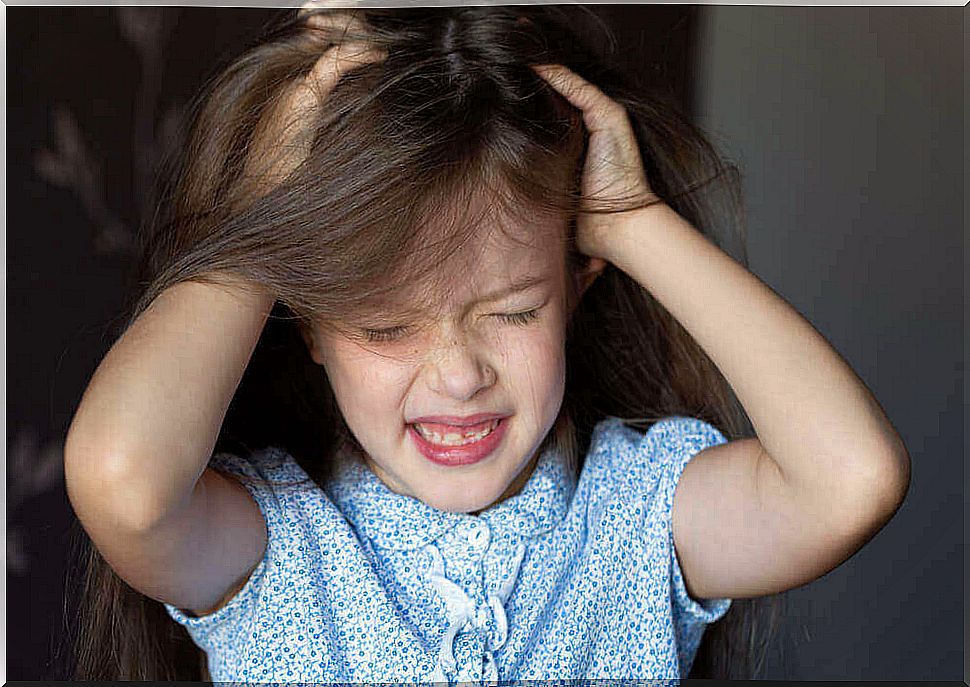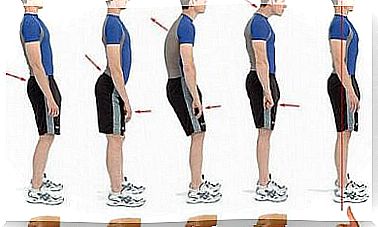Alopecia In Children: Causes And Types

Childhood alopecia is the excessive hair loss that can occur in children under 12 years of age. In the beginning, the problem usually goes unnoticed. That’s because many parents view hair loss as a normal symptom of the growing season.
However, in some cases it can be quite visible. This is especially true because the volume of a child’s hair decreases and bald patches may even appear. What are the causes of alopecia in children? How is it classified? In the article below we tell you about the most relevant aspects of this condition.
What are the causes of alopecia in children?
According to information published by the American Hair Loss Association , 3% of pediatric visits in countries such as the United States involve consultations about alopecia in children. This problem is of great concern to many parents. This is not only because of its relationship with health problems, but also because of the emotional impact on children.
Fortunately, in most cases, the problem is temporary and resolves itself with proper professional intervention. However, in order to determine the right course of treatment, it is important to first establish a diagnosis. In other words, a specialist must determine both the cause of the hair loss and the type.
In many cases, alopecia in children is the result of infectious processes in the scalp or of genetic factors. However, there are other possible triggers that can explain hair loss in small children. These include the following:
- Diseases – include hypothyroidism, lupus erythematosus, childhood cancer.
- Metabolic changes.
- Nutritional deficiencies (for example, a deficiency of zinc or iron).
- Traction.
- Emotional triggers (e.g., parental separation, bullying, anxiety, etc.).

What types of alopecia in children are there?
Alopecia in children is divided into two categories: civil alopecia and non-cicatricial alopecia. In the first category, there is damage to the hair follicles that causes a permanent and irreversible effect. On the other hand, the effects of scarless alopecia are reversible. So, what are the different types of alopecia in children?
Occipital alopecia
As explained in an article published in the Annals of Dermatology , occipital alopecia occurs during the first months of life due to the evolution of the follicular cycle that takes place in the fetal and neonatal periods.
By the 20th week of pregnancy, the scalp already has follicles that are in the growth phase. As the months go by, these follicles enter the shedding phase.
It is at the time of birth that one can observe the abrupt loss of hair. In this case, treatment is not necessary, as the hair will grow back in this area on its own.
Congenital Triangular Alopecia
Triangular alopecia begins in the womb. It is characterized by the presence of a triangular patch where there is no hair. The patch usually appears on either side of the temporal area and does not extend to other areas. This form of alopecia in children is permanent. In other words, there is no treatment.
Telogen and Anagen Effluvium
Children with this kind of problem suffer from profuse hair loss. In general, the loss occurs in conjunction with the following conditions:
- Endocrine Diseases
- Chronic diseases
- Deficiencies
- Chemotherapy
- Pharmaceuticals
- Surgical procedures
- Intense fever
- Vaccinations
Treatment involves diagnosing the underlying cause and then fixing that problem. Telogen and anagen effluvium are the most common variations of diffuse alopecia in children.
Alopecea areata
This is a chronic inflammatory process that originates in the immune system . Hair falls out on its own due to the abrupt stopping of the follicles in certain areas, both on the head and on the body (such as arms or legs).
In general, alopecia areata appears before the age of twenty and is treatable. The main causes are emotional tension or moments of intense stress. For example, during exam time, emotional or physical abuse or a divorce of the parents.

Alopecia in children due to traction
Ponytails, braids and tight hairstyles can also cause hair loss in children. It is the result of the continuous pulling of the hair in certain places.
In some cases, it can also be irreversible. That is why it is important to avoid putting tension on the hair and allowing it to move freely and relaxed.
Alopecia due to trichotilomania
Severe cases of anxiety tend to pull children out of their hair, which can lead to alopecia. Treatment consists of psychological attention with the aim of discovering what is causing the problem. It is considered a nervous tic and is more common on the nape of the neck and in the bangs.
Alopecia due to ringworm
In this case, alopecia is caused by the presence of fungi (English link) and involves local hair loss. In addition, ringworm can spread through direct contact between children.
For example, think of a nursery or school or by sharing a hairbrush or towel. However, it is important to avoid using home remedies. Instead, a medical dermatologist should be the one to point out the right treatment.
What else do you need to know?
In general, each type of alopecia is more common in a specific age group. Occipital and triangular alopecia is more common in infants and small children. Telogen and anagen effluvium, trichotillomania, ringworm alopecia, and alopecia areata are more common in later childhood and adolescence.
Either way, it’s always best to see a pediatrician or dermatologist to get a proper diagnosis. Once a professional has identified the origin of alopecia, he or she will decide on the best therapeutic options.








